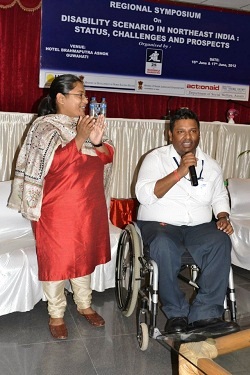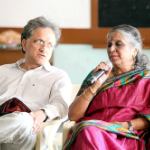Its an abysmal truth, most unpleasant to say the least, that the Assamese people have not yet developed a taste for good cinema. This is evident from the size of the audience at what can be considered the best opportunity to watch a bouquet of aesthetically rich, meaningful films from across the world, at a film festival organized in the city.
Every year the Guwahati based organization, Cineasa, run by friend Bitopon Borbora, a journalist and a film critic, along with his compatriot in the vocation, Nesimul Majid, an ardent film activist, with support from another friend, journalist-film critic Utpal Borpujari based in New Delhi, does the difficult spadework and runs pillar to post to garner funds to hold this festival. Like any film enthusiasts from across India their sole purpose of organizing the film festival is to spread the spirit of good cinema across the state. Yet, the abysmal scenario of attendance to watch the bouquet of films at the festival continues to be low.
As an official of Cineasa has very rightly said in his inaugural speech, the Assamese people have the genius to come up with all sort of excuse for not coming to watch good films. They have time for various other activities that are frivolous and far removed from the serious, but they have no time and interest for anything involving the intellect and intellectual pursuits. The poor attendance and empty seats at the auditorium where the film festival is being held is symbolic of this painful truth.
Every society which has a purpose of being relies on art and culture as matrix of its maturity. The roots of the Assamese society is richly embedded in the past in a cultural milieu sculpted and chiseled over time through the assimilation of various streams of cultures from across distant lands. The richness of the native culture was such that in openly accepting and assimilating streams of cultures into its very folds, each of these influences were moulded into an entity without strains which came to be recognized as Assamese. Like many other societies across the globe, emerging tensions and contestations between political forces gave birth to emerging social polemics and a long crisis called armed conflicts.
While globalization continues to spread its fangs of fright across the world, most of the societies affected by such forces have emerged or at least endeavoured to emerge out of it through the creative medium of the arts, questioning what went wrong, where they stand, a search for deeper meanings told through human stories. Cinema of Iran, eastern Europe and parts of the former Soviet Russia which have attained independence with the fall of the once super power are examples of what art can achieve. The past presents many such examples and the present continues to signify its truth, yet the Assamese society continues to dawdle without a purpose, stained by the ills that invariably, and rather sordidly, afflicts a disintegrated social entity.
Today, people in Assam have more money to spend in luxury then develop a taste for art that addresses life abiding the aesthetic. Cinema continues to be relegated to a lesser position, its dollops and packages of gross commercialized entertainment, the “choli ke pitche kya haai” types have emerged to reign on the tastes of the Assamese people. It would be the saddest day for one of us surviving filmmakers of this land if compelled to write the obituary of my own people.







































